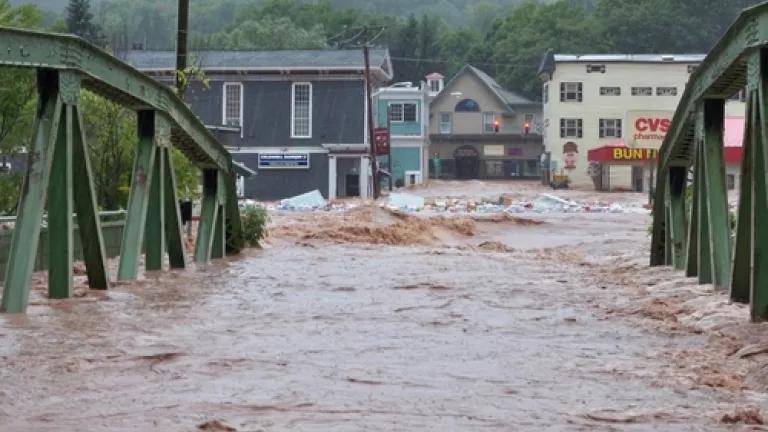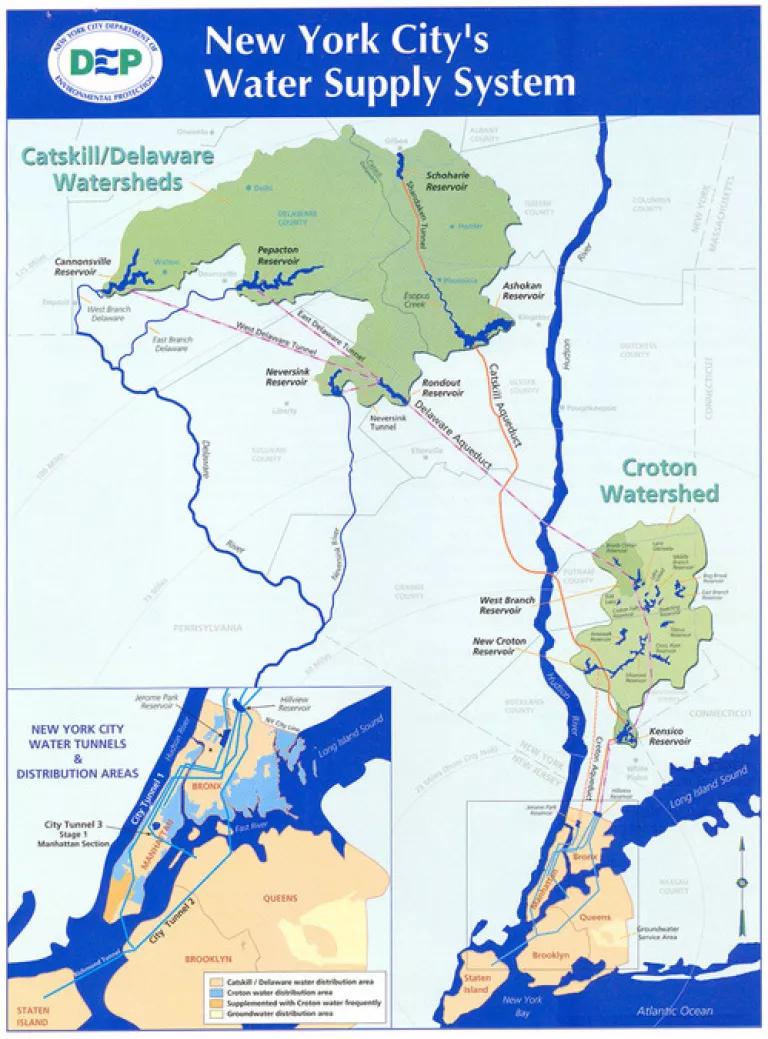
An innovative 15 million dollar program designed to protect upstate residents from flooding hazards and safeguard the drinking water supply for millions of downstate New Yorkers is more than a year and a half behind schedule and has yet to be officially launched.
When operational, the program will allow scores of upstate New Yorkers whose homes are precariously located in dangerous floodplains within the Catskill and Delaware watersheds to sell their properties to New York City at pre-flood fair market value. That will enable these homeowners to relocate their families to higher ground.
The properties acquired would have their existing structures and other potential sources of water pollution removed; the parcels could then be utilized by the community for recreational or open space purposes.
The program was conceptualized at a meeting convened for watershed stakeholders by the U.S. Environmental Protection Agency and hosted by the New York State Department of Environmental Conservation in the aftermath of superstorms Irene and Lee, which devastated parts of the Catskill region more than four years ago.
Climate change is here, as evidenced by Tropical Storm Irene, which swept through the Catskill town of Margaretville in 2011. But a program to purchase homes from willing sellers whose properties are located in dangerous floodplains is 18 months behind schedule.
This long-delayed buyout program will apply only to parcels that are located within the boundaries of Catskill and Delaware watersheds and which drain into New York City's six, huge west-of-Hudson River reservoirs. It will supplement the pre-existing federal/state program that allows for the acquisition of certain properties that have been subject to repeated flooding. Thus, it will enable watershed homeowners to take advantage of the buyout option even if their properties were not eligible for, or the homeowners did not timely apply for, the post-Irene and Lee federal flood buyout program, administered by FEMA.
The new program will also help protect the source waters that supply drinking water to 9 million New York City and Westchester County residents. During superstorms Irene and Lee, large volumes of debris and pollution were swept by surging waters from floodplain properties into the city's Catskill and Delaware system reservoirs.
Just last year, for example, officials plucked a leaking oil tank out of New York City's Schoharie reservoir, after a 900 foot long oily sheen was discovered on the reservoir's surface; officials suspected the oil tank was washed into the reservoir during Tropical Storm Irene. And that's just the tip of the iceberg.
To avoid such problems following future storms, the city-sponsored flood buyout strategy was developed. The city committed to advance this buyout initiative as an element in its most recent Long-Term Watershed Protection Program, which was approved by the New York State Health Department in 2014, pursuant to the federal Safe Drinking Water Act.

More than 9 million New Yorkers get the drinking water from NYC's Catskill and Delaware watersheds. A long-stalled New York City-funded floodplain buyout program would help upstate residents move to higher ground and safeguard downstate drinking water quality.
By committing to implement a comprehensive long-term watershed protection program, New York City has been granted a waiver from having to build massive water filtration facilities for the Catskill and Delaware water supply.
The watershed protection program provided that this floodplain buyout initiative was to have begun following submission of necessary permit modifications by the city to the state on July 31, 2014.
To be sure, such documents have been submitted and city and state officials have been working with watershed representatives to finalize the details of this program for many months. The stakeholders have expressed a willingness to help property owners who take the buyout option in finding new residences in nearby communities. All parties insist they would like to see the program move ahead.
But some watershed interests have continued to question details of the buyout program, even after close of the formal comment period. And city and state officials have seemed willing to re-negotiate every last objection, rather than move the long-delayed plan out of the starting gate.
With such concerns in mind, NRDC, Riverkeeper, the Catskill Center for Conservation and Development and the Delaware Riverkeeper Network sent a letter to State Health Commissioner Howard Zucker and City Department of Environmental Protection Commissioner Emily Lloyd on March 11, 2016, urging them to refrain from making additional changes based on requests that came in after the close of the public comment period and to finalize the program within 30 days.
Climate change is already upon us. More frequent and turbulent storms are certain to sweep through New York's Catskill and Delaware watershed region in the months and years to come.
Further delay in implementing this purely voluntary, property rights-respecting, public safety and health-protecting program is simply inexcusable.
